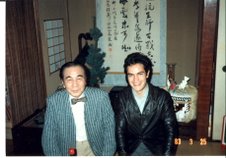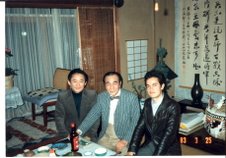A Northumbrian Anthem, an update
A revamped website including this blog and its adjuncts will migrate to a different platform. To ensure continued access please use the domain address, agustinfernandez.com, rather than the individual Blogger addresses. Un sitio renovado incluidos este blog y sus adjuntos migrará a una plataforma distinta. Para asegurar el acceso ininterrumpido se sugiere usar la dirección del dominio, agustinfernandez.com, y no las direcciones individuales de Blogger.
Posted on November 24, 2018
Labels: A Northumbrian Anthem, Alexandru Murariu, Barrett, Boulez, Elgar, Espaces IV Spezzati, Ferneyhough, Instituto Laredo, Walton
I was not able to attend the première of LoA on 22 September. The reports are heartening, both about how the piece was performed and about the reception by the audience.
A première is a difficult thing to miss and this one in particular was special in a number of ways. It is an intensely personal piece, condensing in ten minutes many of the experiences, thoughts and feelings accumulated over twenty-three years of life, work and love in the Northeast of England. The tune Lads of Alnwick, which underlies LoA, followed me around for much of this time, energising me with its enigmatic drive. LoA also represents a triumph over adversity, both in terms of the disabled musicians' belief-defying achievement and of my being able to write the piece in difficult circumstances.
I thank Sage Gateshead for the commission, the players of Royal Northern Sinfonia for pouring their musicianship into this music, and the four guest musicians Clarence Adoo, Adrian Lee, Gem Lunt and Stephanie West. I hope to hear the piece before too long.
Meanwhile, here is the usual consolation in the form of a computer simulation. This is the version for ten instruments, which replaces the perhaps unrepeatable - or at least hard to repeat - combination that included Clarence Adoo's unique Head Space instrument.
I report completion of LoA, a ten-minute chamber piece for nine instruments (Head Space, Oboe/cor anglais, Soprano/alto saxophone, Lever harp, Electric guitar, Violin, Viola, Cello, Double bass).
This is a commission from North Music Trust as part of the celebrations of the 60th anniversary of Royal Northern Sinfonia. The première is scheduled for 22 September 2018 in Sage Two, Sage Gateshead, by RNS players and guests.
The programme notes are available in the relevant part of this blog.
There is also an alternative version of this piece for ten instruments, with a trumpet and a bassoon replacing the rather unique Head Space, and instrument which has been developed for the specific requirements of the extraordinary musician Clarence Adoo.
Posted on August 08, 2018
Labels: Clarence Adoo, Head Space, LoA, North Music Trust, Royal Northern Sinfonia
With some delay I write a few lines on this year’s Sigismund
Toduță Festival, which took place from 11 to 17 May in Cluj-Napoca. This year’s
was my third visit to the Festival.


